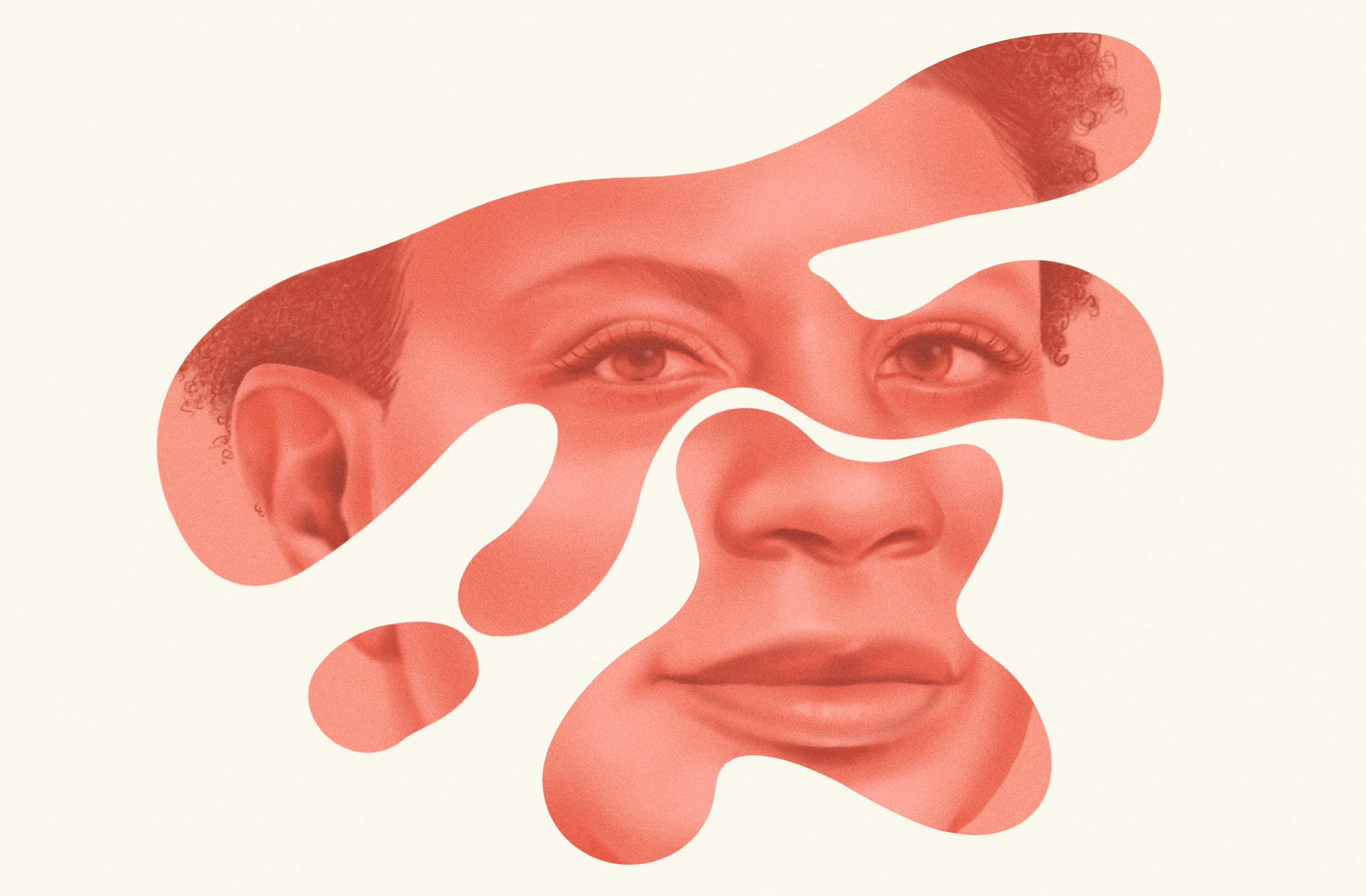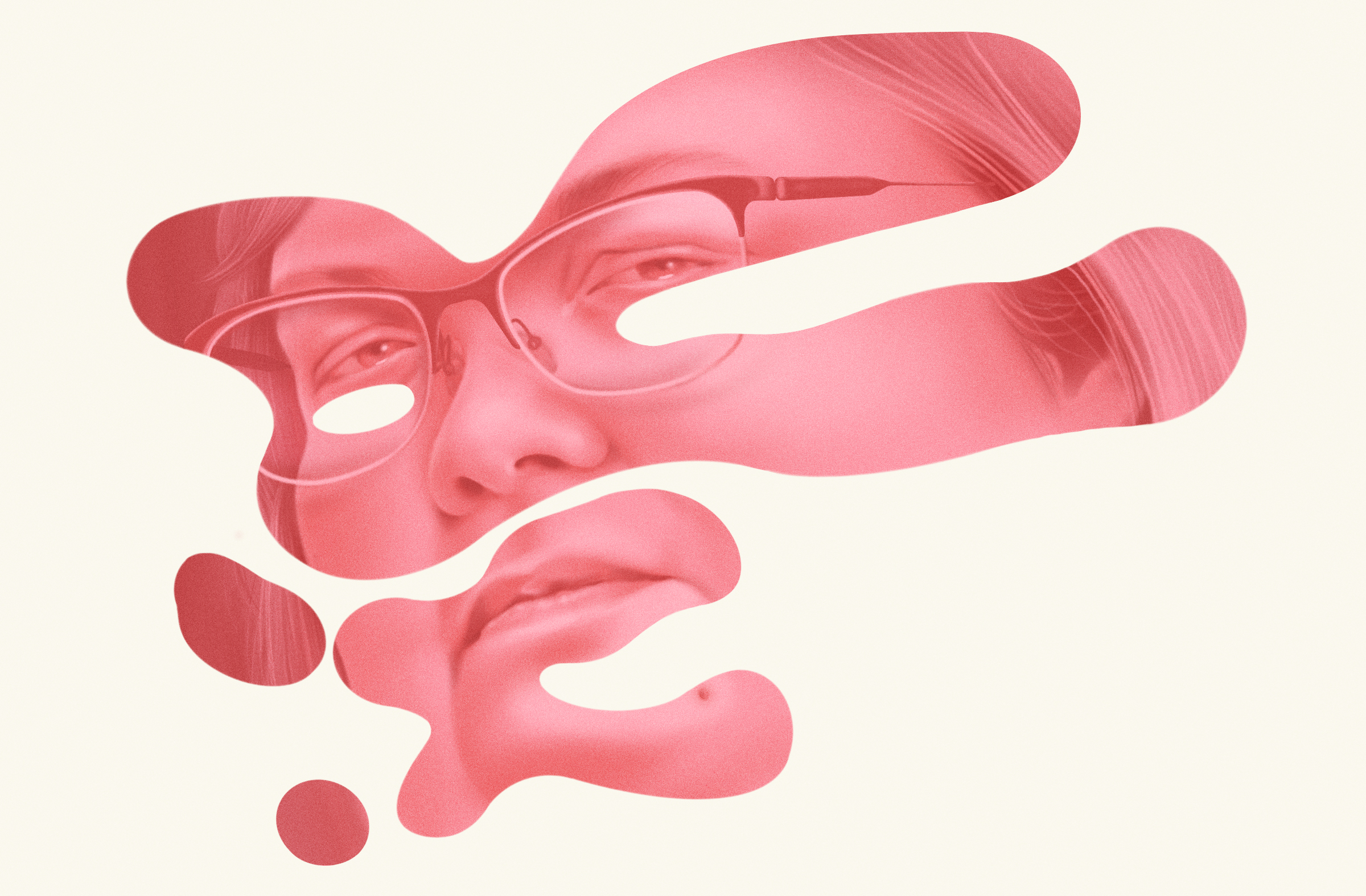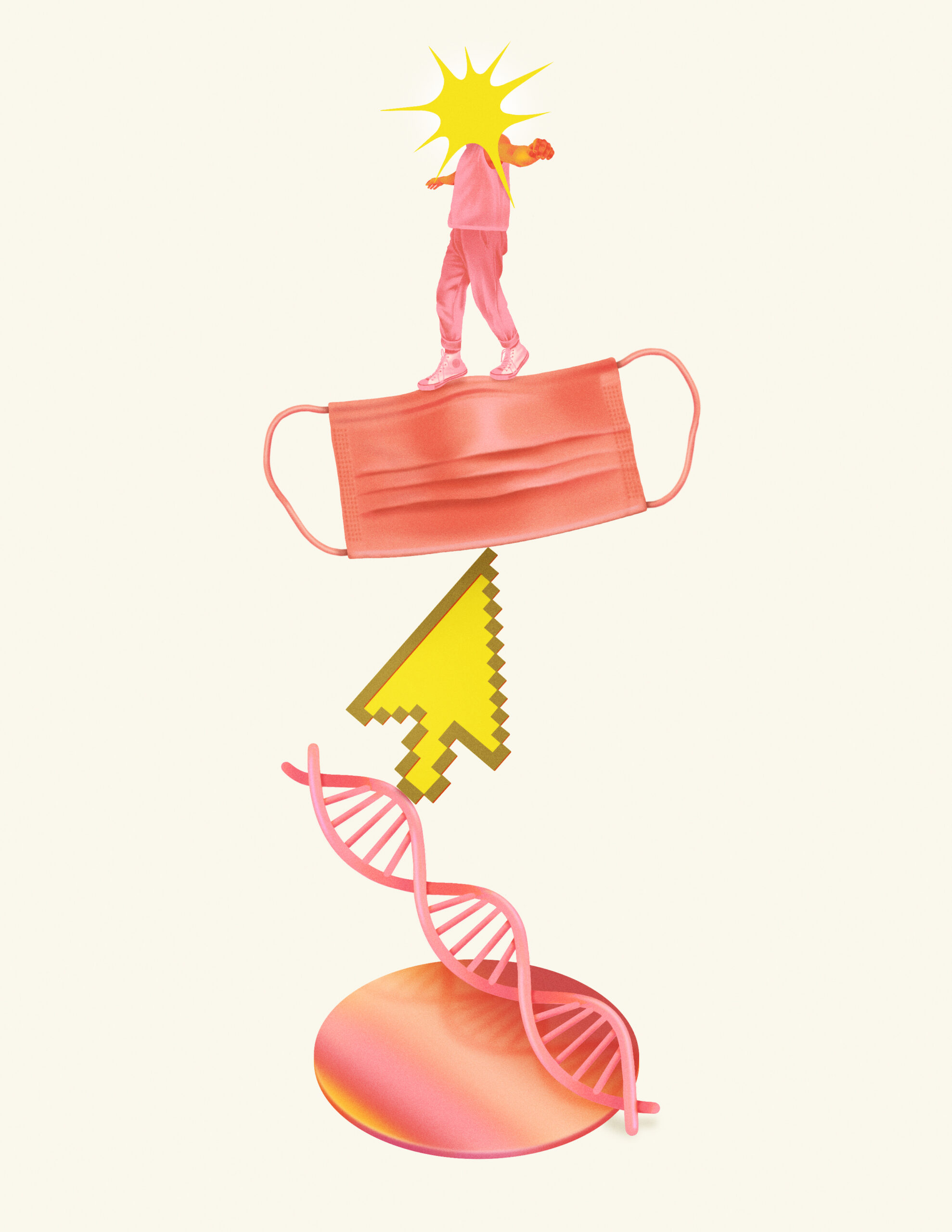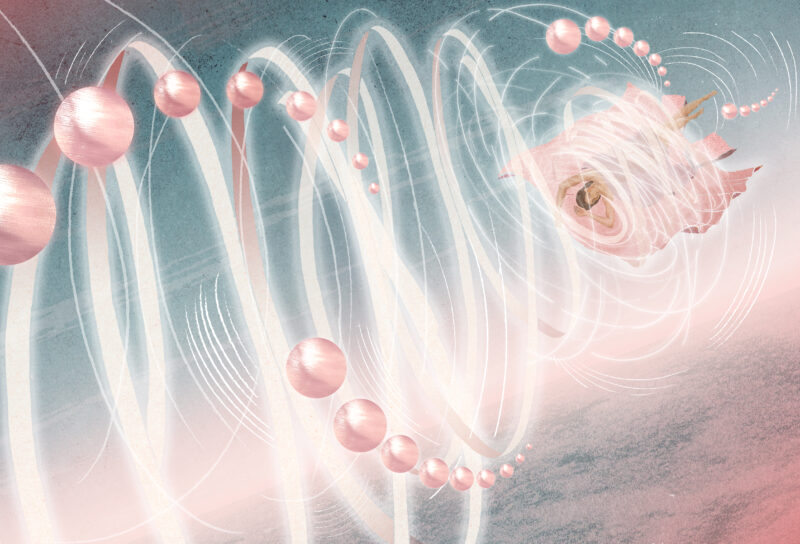Early on in the pandemic, there was a misguided hope that this shared experience would be some kind of social equalizer. That same hope has attached itself to all manner of social transformations in our lifetimes. We used to think that big technology platforms would be another great leveler, and they have turned out to be anything but. As synthetic biologists, whose work could also change how our society evolves, we need to keep an eye on that gulf between equitable intentions and real-world implications. This requires having a better understanding of how regular people experience their relationship to science in the post-internet age. To gain a better grasp on this question, Christina Agapakis sat down with two sociologists of big data, Alondra Nelson and Joan Donovan, and asked them about the many ways new technologies affect how people think about their identities, and what this means for public science in the new age of pandemics.
Christina Agapakis: You have both studied genetic testing and DNA science, which are pretty overt examples of how technology and science can inform people’s identity. The companies in these areas make the same argument as big social media platforms, promising to show us how we’re all connected. What did you learn from genetic testing about the ways that technology and data mediate our identities and our social hierarchies?
Alondra Nelson: Genetic data — like all data, for that matter — gets its meaning from society, culture, and politics. One of the interesting things about following the early days of direct-to-consumer genetic testing, as I did in the early aughts, was watching the companies try to create that meaning. They used to send information to consumers that made no sense to them — sheets and sheets of SNP [single nucleotide polymorphism] markers and genetic markers. The companies became much better at telling stories through data visualizations, or certificates of ancestry. Consumer genetic testing is an art as much as a science. It’s one place where you see very clearly how, not just genetic science, but science generally, is given meaning in the social world, and how that ascribed meaning becomes recirculated.
In my work, I’ve been interested in really tracing and understanding how that circulation-dissemination ecology happens in communities of color. Black communities have been the most damaged by pernicious thinking about biology and genetics — by scientific racism — from the 17th century to the present. I want to understand the hurdles for and courage of Black communities trying to find space for their health and well-being, space to be biologists, scientists, and the like, given that history of scientific racism. Working on genetics is the best preparation for thinking about contemporary issues of data politics because the stakes are very clear. The racial politics of genetics return us to the very old story of race-making, racialization, and racism.
Joan Donovan: My research in this arena focuses on a different population. I was working as a postdoctoral fellow at UCLA on a project to try to understand how white people interpret genetic ancestry testing. Turns out, it’s really hard to find white people who will admit to being white. They will immediately go into a nationality; my family will go, “But we’re Irish!” And so what we decided to do was study communities of people that are really proud of being white: white supremacist communities who were having discussions about genetic ancestry testing. As the testing became more and more available, they started trying to incorporate those tools into their boundary-making work.
When, as Alondra mentioned, the marketers started to realize that nothing was really translating, they simplified the story and started talking about how you’re either European, Asian, or African. We studied a particular white supremacist message board from 2004 to 2015. In those 11 years of data, you can see how their ways of talking about genetic ancestry testing changes as the tests developed, creating a kind of worldview of how genetics represent them. At the same time, they were struggling with the fact that genetics as a science is really messy. There’s lots of confusing and confounding data. They would get back these results that would say that they are not 100 percent European. Immediately, instead of thinking, “Oh, well, maybe there’s something different about me, or maybe this is true about me,” they started to challenge the science. They would get really deep into genetic theories. They would start to make up conspiracy theories about the companies that were giving these tests, saying that they were somehow part of some grand conspiracy to deracinate whites in the U.S.
Another thing that was interesting, though, is the data portability part of it that started to come up around 2012, as they were able to take their data from one database and move it into another. If the database didn’t have a very diverse population set in it, they were effectively able to whiten up their data by moving it to smaller databases and then recalibrate how they felt about their results. The conclusion of that research is essentially that there are many different ways of making up whiteness and of constructing your whiteness. It’s back to that point where you can somewhat trust the science if it’s giving you the results that confirm what you’re seeking to reaffirm. And Alondra’s work was really informative, especially around this concept she came up with: genetic disorientation, which is that people don’t often get results that are affirming, but they get results that do require them to do some introspection and do more research.
Christina: Scientists sometimes have this idea that the feeling of disorientation is going to show us that these categories don’t actually exist or are somehow not actually meaningful. Can technology do the opposite? Can it, in fact, reinforce mythical racial categories?
Joan: I think technology wants to promise us that there is a world beyond race that doesn’t require a reckoning and a serious attempt at some kind of reparations. Technology doesn’t erase social inequalities. You may approach genetic ancestry testing as a way to say, “I want to know who I am,” that at the molecular level, it is written in the blood. But when you approach the world, and you step into the world with your body, people see you first. They don’t see what’s in your blood. Technology creates abstractions around race, but it also reduces us pragmatically to very few categories.

Alondra: I think the thing we have to remember is that it’s not some Habermasian table where we all sit down and make categories. We really have to understand that we’re all equal partners in category-making. Joan laid this out really nicely: The kind of black boxing of all of that work that happened before is, I think, why we often fail to understand that science and technology are always political and social and, indeed, about political economy. Depending on the context and the situation, that’s not necessarily good or bad; it’s just an empirical fact. For me as a scholar, the challenge then becomes: How do we make sense of all of that?
Christina: Scientists often don’t want to think that their work is political. How can we help scientists accept that reality and accept the responsibility that comes with it?
Joan: Right now is an important moment for sociologists like us to step in and study science, technology, and especially the datafication of biology, because that’s going to tell us who we are for the next couple of decades. The data that we’re developing right now — in this very moment — about COVID-19 is going to set the precedent for what the policy and the programs are going to be for planning around not just pandemics, but epidemics or other kinds of infectious disease outbreaks. So we’re in a crucial moment where sociologists must be engaging with technologists and scientists to understand what their questions are, what motivates their research, but then also lessening the burden of people who want to believe either that scientists have all of the answers or that the whole thing is a conspiracy. We need to move to the middle on this and start to understand science as it works.
Alondra: We all have an obligation as human beings to question our orientation to the world. It’s not only scientists. I think there is a particular epistemology around science that makes it easier or maybe more comfortable for scientists to say, “It’s got nothing to do with me.” Technology is now being used for predictive policing algorithms that, as was reported recently, put an innocent person in jail. I think we all make choices about the standpoint we want to have vis-a-vis our work. I want to refuse the sense that it’s only scientists. But I also want to press on scientists to actually be braver in how they orient themselves to the rest of the world and to the implications of their work.
Christina: I wanted to pick up what you said about making meaning from the data. With the pandemic, there’s been so much conflict and tension around that data. How are we making it? What does it mean? What is it exposing or hiding? How is it being used by different groups? How is the pandemic changing this discourse?
Alondra: This connects to the racial, ethnic disparities data around COVID-19 infection and mortality rates. COVID-19 didn’t create racial health disparities. We live in a world, in the United States, in the UK, of profound inequality. So there was this kind of tautology there, like, “Oh, COVID-19 created these disparities. What does it mean?” When in fact it was like, here comes this viral companion coming to spend time with us in a society that’s rife with inequality from beginning to end.
What does that data mean? What does it mean that African-Americans have, depending on what data you’re looking at, 2 percent to 2.5 percent higher rates of infection and mortality rates? What does it mean that you see similar rates of disparity in the UK with what are called BAME (Black, Asian, and minority ethnic) populations, which are completely different from Black and Latino populations in the United States? That shows what a lazy read it is to say, “Oh, it’s got to be genetic.” What I hope for out of this moment, and what we’re already seeing, is more sophistication in the public sphere about racial health disparities and about the kind of edifice of medical discrimination, all of the layers. We’ve got discrimination in medical education. We have a history of mistrust coming out of experimental abuse. In the literature, there’s actually something called insurance discrimination. If you are working-class — a Black person, in particular — having insurance, even if you have good private insurance, does not ensure in the least that you receive the best care, or even adequate care.
And then we’ve got the concept that the social scientist Arline Geronimus calls weathering, which is about the way that chronic experiences with racism and inequality literally weather the body down. So all of the systems that you need to be healthy — endocrine, metabolism, your immune system, your cardiovascular system: When they fail, they create the “comorbidities” that we were talking about early on in the COVID crisis. They are shown to be demonstrably weakened in people who face the chronic stress of racism in a structurally racist society. So, let’s take all of that into account. This problem is huge and it’s multi-layered, like a sedimentary rock archiving our history.
Joan: We have to actually think about the word “statistics,” which means science of the state. This is what the state is meant to do, to ensure the health and security of the population by doing massive amounts of survey work and trying to understand the true threats to the population. And when data gets aggregated in certain ways and not others, we have to really question who’s making those decisions. Is it a failure of resources? Is it purposeful obfuscation? Is it related to a history of erasure, or gaps and silences? There’s going to be a lot of longitudinal data that we’ll have to reckon with. We’re going to have to do a lot of work to recover lost data, to disaggregate data, to check all of this data that’s coming out as we deal with this.
There were persistent myths that had come up in the Black community that we wanted to make sure that people had knowledge of and were also equipped to address with correct information. There were rumors that Black people could not die from COVID-19. Another myth was that the virus was manmade for the purpose of population control. The third myth was that the virus could be contained through the use of herbal remedies. And that, too, is something that speaks to the disparities in our health care system, where a lot of people are treating major diseases at home or triaging, trying to prolong their life at the expense of the quality. And they’re doing this out of desperation and also because of distrust in medical institutions. We cannot discount the fact that when you get mistreated by institutions, that kind of knowledge transfer is not just within families but intergenerational, and people will adopt the habits of their parents. These are the kinds of things that we’ve been documenting as a team, and that data is going to help us unpack and confront some of these myths and some of this misinformation.

Alondra: Patricia Turner wrote a book about African-American conspiracy theories almost 30 years ago, and one of her takeaways was that there’s always this grain of truth to them. The book is called Heard it Through the Grapevine, and it traces these myths back to real concerns. Sterilization in the population, for example, is not just a historical fact; it has happened repeatedly in the history of the United States to African-Americans, Puerto Ricans. There’s been both chemical and surgical sterilization campaigns against working-class women of color. Unfortunately, this means that some people are not using the health-seeking behaviors we’d really want them to. At the same time, it’s totally understandable. That’s one reason people seek out herbal remedies. If you don’t have access to health care, if you don’t trust health care, if you are actually just watching the news every evening and you see that you live in a society in which people are weighing the interest of the economy against their lives, you may well come away with huge mistrust of Big Pharma. I think that there’s also a cost-benefit analysis that people are making. Our analysis [of distrust being purely anti-scientific] isn’t nuanced enough for all the things that are happening, and all the things that have happened.
Joan: Misinformation tends to creep into communities through vectors of identity. That’s why professional spreaders of misinformation use these sock puppet fake accounts — they impersonate Black people, trying to use the legitimacy of their voices online. It’s really important for us to understand misinformation as a targeted approach to creating immense polarization and wedge issues that crowd out any kind of authentic voice or a capacity to represent oneself.
Christina: I think that often, with so many of these big issues, we revert back to individual answers or solutions. Especially in science communication, in the social media world, there is a very individualistic approach — everyone must learn how to interpret facts — a one-on-one battle against misinformation. Your work shows that these are systemic issues. In light of that, what can we do as far as interventions? How do you ensure both information veracity and transparency about how authority in this space is conferred?
Alondra: I think that transparency alone, just like data alone, doesn’t guarantee us a good social outcome. Transparency without clear values can lead to a bunch of data or lots of information with no context, or lots of information that’s not being led or guided by a sense of social good that we’re trying to reach. It’s like the old days of the Twitter API: Like a firehose, there’s just a lot of stuff coming out, and that’s transparency. You’ve got to do something with that information. And part of what you do with that is say, “What’s the outcome that we’re trying to accomplish?” And I don’t mean that in a “massage the data” way. But I just mean, what is the good that we want? Do we want more people to be involved? Do we want more people to participate? Do we want more people to have a voice? That’s what I mean by values.
Joan: Everywhere you go seeking transparency, you run into different forms of gatekeepers, different forms of opacity that are incredibly hard to knock down individually. And it’s not just research that’s going to get us there. It’s journalists. It’s watchdog organizations. It’s civil society. We need to get away from this reactionary content moderation mode where Jack Dorsey and Mark Zuckerberg are the world’s head content moderators. We need to move into a curation mode, where we hire 10,000 librarians and we give them access to this data, and we have them help structure a taxonomy where, when you Google something like “Did the Holocaust happen?” you get facts. You get things that are true and correct because we have that right to truth. And so I think that those are the kinds of things that individuals should demand of our information ecosystem. And at the same time, we also have to have a way to say no. I think that this is something that Nazneen Ahmed has really taught me: If our data is that valuable, we need a way to say no. And we need a way to say no to its transfer. We need a way to say no to its capture. And we certainly need a way to say no that involves deletion.
Alondra: I think we’re at a point of reckoning, and it requires some people to give things up and others to take less. It requires that instead of having these universal ideas about society and the Great Leveling and the Great Equality, that we actually understand that some people need more and that we should give more to people who are in need. So I think it’s going to take us a while to get to something that feels like a space of hope. I think we are certainly at a turning point, and, in some ways, things will be permanently different going forward.
Interview has been edited for length and clarity.



